Bralow's School of Fish - Shellfish Education
Where we teach you everything you need to know about the world's best Shellfish found only at Bralow's Fresh Fish & Seafood.
Premium Pink Shrimp
Where we teach you everything you need to know about the world's best Shellfish found only at Bralow's Fresh Fish & Seafood.
Premium Pink Shrimp
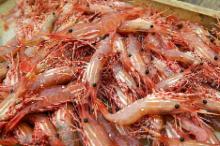
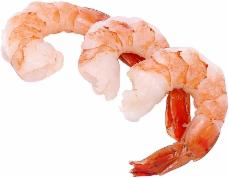
Available Daily
Premium Pink Shrimp - There are a vast number of different kinds of shrimp throughout the world, all divided into four basic categories; tiger shrimp, brown shrimp, white shrimp and premium pink shrimp. Tiger shrimp (usually found in supermarkets) are mostly farmed in Asia and treated with sulfites and other chemicals to prevent deterioration. Brown shrimp have a high iodine content that leaves a lasting chemical taste and are therefore inexpensive. White shrimp are found in the Gulf of Mexico and considered to be a high-end shrimp second only to Pink Shrimp. Premium Pink Shrimp are relatively scarce, inhabit cold waters and are the best-tasting shrimp in the world.
We ONLY carry Premium Pink Shrimp in the following sizes:
Medium - 41 to 50 per pound.
Large - 26 to 30 per pound.
Extra Large - 16 to 20 per pound.
Jumbo - under 15 per pound.
We ONLY carry Premium Pink Shrimp in the following sizes:
Medium - 41 to 50 per pound.
Large - 26 to 30 per pound.
Extra Large - 16 to 20 per pound.
Jumbo - under 15 per pound.
Little Neck Clams
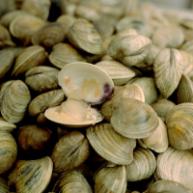
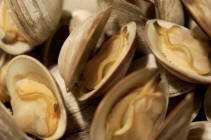
Available Daily
Little Neck Clams - Clams are bivalve mollusks with two shells (valves). Hard-shell Clams have a thick grayish shell and can live for more than 150 years. Clams do not have a head or eyes, but do have kidneys, a heart and mouth. Little Neck Clams, named after Little Neck Bay on Long Island, once a center of the clam trade, are the smallest hard clam. A live hard-shell Clam will have a tightly closed shell or will close if tapped. Make sure that Clams are alive before cooking.
Mussels
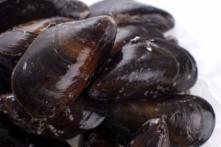
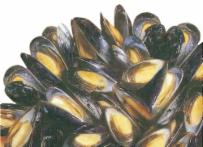
Available Daily
Mussels - Mussels are bivalve mollusks with two shells (valves). Mussels are sweet, tender, delicate, plump and juicy. They vary from creamy colors in males and apricot for females. Cultivated mussels are grown on ropes suspended above the sea floor. Their beards are removed and they are cleaner than wild mussels. Live mussels should have tightly closed shells full of juice. Take care that Mussels are alive before cooking.The aquaculture industry most prized for culture grown mussels is located on Prince Edward Island, Canada. Shellfish aquaculture activities in PEI are conducted in nineteen bay systems around the island. Because PEI aquaculture occurs in a natural environment, the industry has a requirement for pollution-free waters. Over the years, PEI mussels have gained international reputation as superior quality shellfish.
We ONLY carry Prince Edward Island cultured Mussels.
Sea Scallops (Chemical Free - Day Boat)
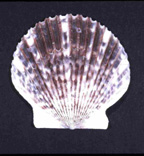
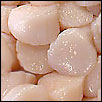
Available Daily
Sea Scallops - The Scallop is possibly best known for its beautiful and distinctive shell. Botticellii and many others have captured them in works of art. Scallops are bivalve mollusks with two shells (valves). Scallops are said to have eyes, but in reality they have sensory tentacles and can actively swim by propelling water. The most common Sea Scallop in North American markets are found in deep waters from Newfoundland to North Carolina.
Because Scallops cannot survive outside of water like Clams, Mussels and Oysters they are shucked quickly after being caught. However, since they are found in deep waters, many ships go out for multiple days. This means longer voyages that force fisherman to catch and shuck scallops up to a week before returning to shore. Only Day-boat Scallops are caught within a 24-hour period and brought to market immediately.
Additionally, because of the need for ships to travel far from the coast to catch Scallops there is a tendency to treat early caught Scallops with chemical phosphates that will help to retain moisture and soak up additional water.
We only carry "Day-Boat" Scallops that are "Chemical-Free."
Because Scallops cannot survive outside of water like Clams, Mussels and Oysters they are shucked quickly after being caught. However, since they are found in deep waters, many ships go out for multiple days. This means longer voyages that force fisherman to catch and shuck scallops up to a week before returning to shore. Only Day-boat Scallops are caught within a 24-hour period and brought to market immediately.
Additionally, because of the need for ships to travel far from the coast to catch Scallops there is a tendency to treat early caught Scallops with chemical phosphates that will help to retain moisture and soak up additional water.
We only carry "Day-Boat" Scallops that are "Chemical-Free."
Oysters
Available Daily
Blue Claw Crabs
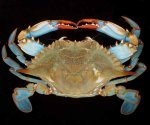
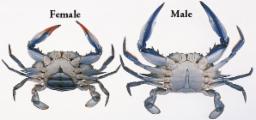
Not Currently Available
Soft-shell Crabs
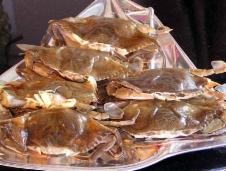
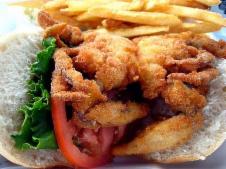
Available Daily
Alaskan King Crab Legs
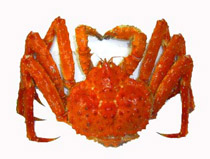
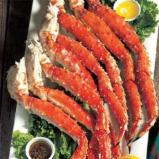
Available Daily
Alaskan Snow Crab Clusters
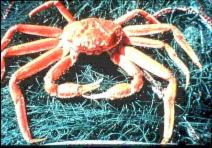
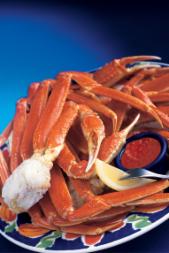
Available Daily
Brazilian Rock Lobster Tails
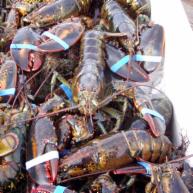
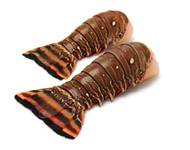
Oysters - Oysters are saltwater bivalve mollusks. Because they filter so much saltwater they are high in minerals. The Native American or Eastern Oyster thrives from New Brunswick to the Gulf of Mexico and includes Bluepoints from Long Island and Wellfleets from Cape Cod. Oysters are at their best in winter months, with the main season lasting from late September through April. Oysters spawn in summer months; though edible, they tend to be flabby and insipid. This is the reason they are traditionally only eaten in months with names containing an R.
Blue Claw Crabs


Not Currently Available
Blue Claw Crabs - These hard-shell crabs have an olive-green top shell with a white underbelly with blue tipped claws for males and red tipped claws for females. Immature female crabs are know as "Sally" or "She-crab." Mature female crabs are know as "Sook." The larger, meatier males, called Jimmies," are the most desired.
Blue Claw Crab meat has a rich, sweet, succulent , and buttery flavor. The body meat is white, tender, and delicately flavored, while the claw meat is brownish with a nuttier flavor. Crabs should be kept alive prior to cooking by keeping them cool and dry. Crabs should never be placed in a container of water as they will quickly die from lack of oxygen. Crabs that have been chilled may appear dead, but will begin showing movement as they warm.
Picked Blue Crab meat is packed in 1 pound containers and sold in retail markets. Colossal or Jumbo lump is the largest and most expensive; Super Lump is a bit smaller, followed by Lump and finally backfin the smallest bits from the body. The darker, stringier Claw meat is also packaged and relatively inexpensive.
Blue Claw Crab meat has a rich, sweet, succulent , and buttery flavor. The body meat is white, tender, and delicately flavored, while the claw meat is brownish with a nuttier flavor. Crabs should be kept alive prior to cooking by keeping them cool and dry. Crabs should never be placed in a container of water as they will quickly die from lack of oxygen. Crabs that have been chilled may appear dead, but will begin showing movement as they warm.
Picked Blue Crab meat is packed in 1 pound containers and sold in retail markets. Colossal or Jumbo lump is the largest and most expensive; Super Lump is a bit smaller, followed by Lump and finally backfin the smallest bits from the body. The darker, stringier Claw meat is also packaged and relatively inexpensive.
Soft-shell Crabs


Available Daily
Soft-shell Crabs - Blue Claw Crabs that have shed their shell are known as Soft-shell Crabs. Over its two-to-three year life span, a Blue Crab out grows and sheds its shell about 20 times. The actual molting process lasts for only a few minutes as the crab pushes out the rear of the old shell. Once the crab has molted, it can increase in size up to 35% of its prior state and the new shell takes about 4 days to harden.
Soft-shell Crabs are separated by size, not sex, with the largest called Whales, then smaller Jumbos, then Primes, and the smallest are called Hotels. They are almost entirely edible, with a salty, sweet taste.
Soft-shell Crabs are separated by size, not sex, with the largest called Whales, then smaller Jumbos, then Primes, and the smallest are called Hotels. They are almost entirely edible, with a salty, sweet taste.
Alaskan King Crab Legs


Available Daily
Alaskan King Crab Legs - The King Crab is the largest commercially harvested crab, with a spiny shell and long, spidery legs. Most crabs have 10 legs, but King Crabs have 6 walking legs, one larger crusher claw, and one smaller pincher claw. They often march in herds across vast expanses of underwater plains such as the Bering Sea. King Crabs grow up to 6 feet and weigh up to 10 pounds.
Alaskan Snow Crab Clusters


Available Daily
Alaskan Snow Crab Clusters - Snow Crabs are a different species from King Crabs. They are also known as Opillo Snow Crab, Tanner or Spider Crab. Harvested from the Bering Sea, Snow Crabs are common at depths of less than 650 feet. Snow Crabs migrate extensively from shallower to deeper waters over their lifetime. Long-term migrations suggest that Snow Crabs may have different needs such as prey, temperature, and sedimentary types at different stages of life.
Brazilian Rock Lobster Tails


Available Daily
Squid (Calamari)
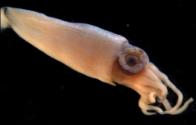
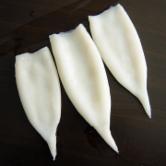
Available Daily
Brazilian Rock Lobster Tails - A Lobster's body is divided into two main parts: the head and thorax (midsection) and the abdomen (called the tail) with its small, scissor-like feelers. Female Lobsters are plumper than males. The first set of feelers below the thorax are soft on a female and hard on males. Females have shorter, wider tails. Lobster meat is mild and sweet in flavor, with and incomparable meaty texture and satisfying flavor.
Brazilian Rock Lobster are warm water Lobster. Many different warm water Lobster Tails inhabit the waters of the world, and each are named for their specific country of origin. By far, the best and most sought after warm water Lobster Tails come from Brazil.
Brazilian Rock Lobster are warm water Lobster. Many different warm water Lobster Tails inhabit the waters of the world, and each are named for their specific country of origin. By far, the best and most sought after warm water Lobster Tails come from Brazil.
Squid (Calamari)


Available Daily
Squid - Squid have a fleshy, cigar shaped, soft body with two fins on either side. They have ten arms, two of which are long tentacles. Giant squid over 100 feet long, are rumored to live in the depths of the Atlantic Ocean. However, their younger relatives are sought after for their tender texture and mild, delicate flavor. When heated, Squid meat becomes firm rapidly and then turns chewy until long cooking breaks down the muscle, so they should either be cooked briefly (no longer than three minutes) or simmered for a long time (no less than twenty minutes).